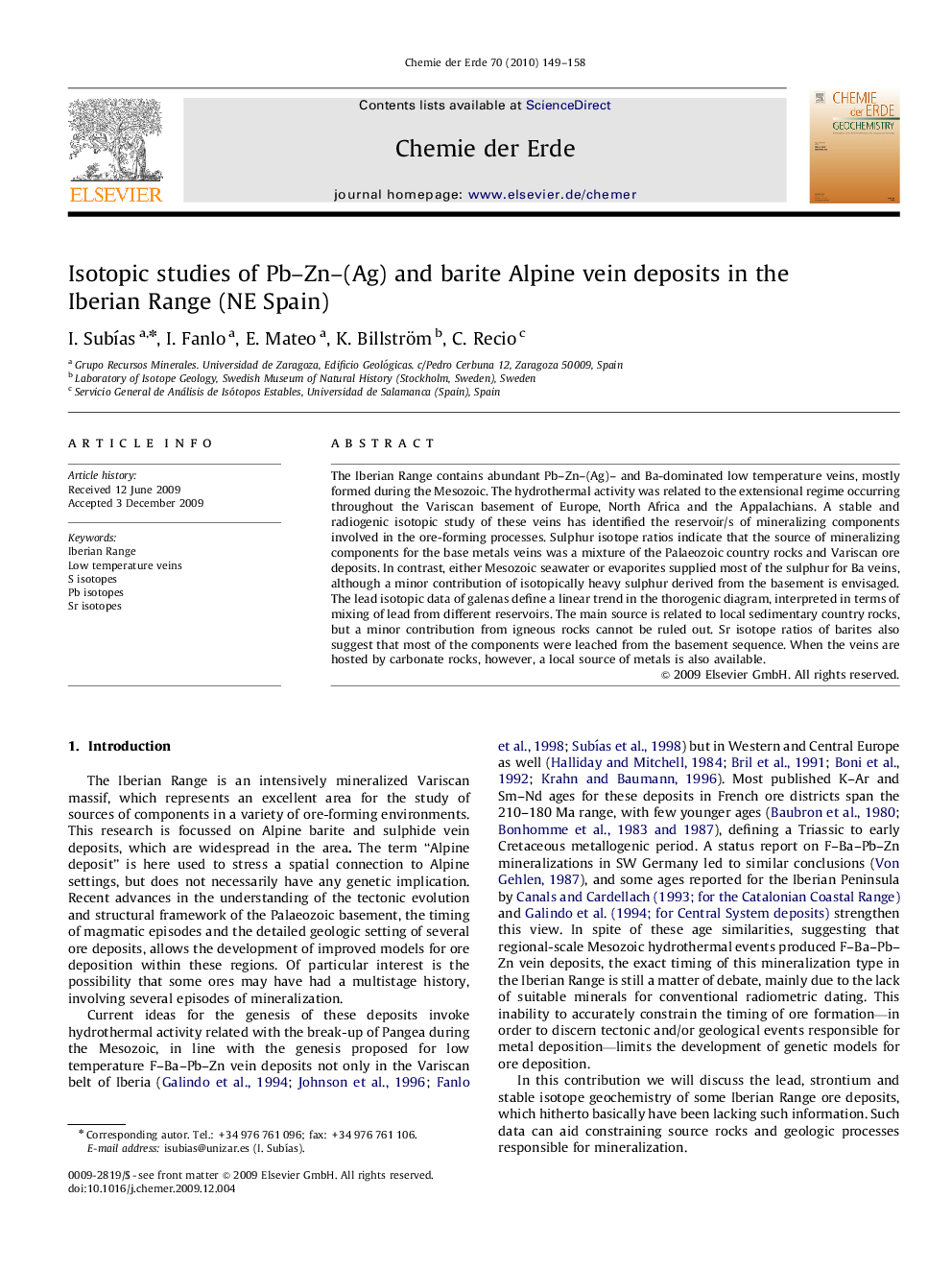| Article ID | Journal | Published Year | Pages | File Type |
|---|---|---|---|---|
| 4407060 | Chemie der Erde - Geochemistry | 2010 | 10 Pages |
The Iberian Range contains abundant Pb–Zn–(Ag)– and Ba-dominated low temperature veins, mostly formed during the Mesozoic. The hydrothermal activity was related to the extensional regime occurring throughout the Variscan basement of Europe, North Africa and the Appalachians. A stable and radiogenic isotopic study of these veins has identified the reservoir/s of mineralizing components involved in the ore-forming processes. Sulphur isotope ratios indicate that the source of mineralizing components for the base metals veins was a mixture of the Palaeozoic country rocks and Variscan ore deposits. In contrast, either Mesozoic seawater or evaporites supplied most of the sulphur for Ba veins, although a minor contribution of isotopically heavy sulphur derived from the basement is envisaged. The lead isotopic data of galenas define a linear trend in the thorogenic diagram, interpreted in terms of mixing of lead from different reservoirs. The main source is related to local sedimentary country rocks, but a minor contribution from igneous rocks cannot be ruled out. Sr isotope ratios of barites also suggest that most of the components were leached from the basement sequence. When the veins are hosted by carbonate rocks, however, a local source of metals is also available.
